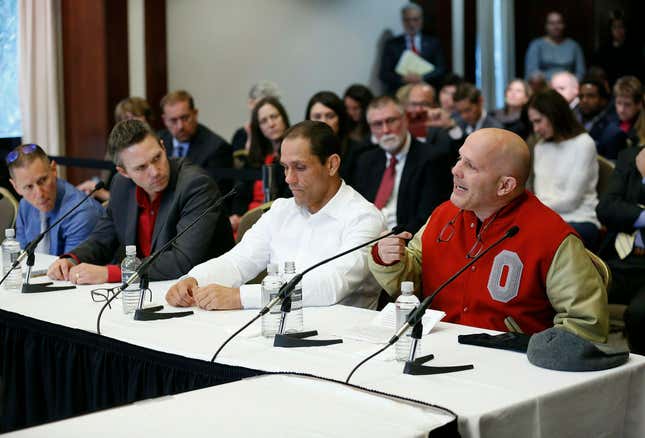Hundreds of Men Were Sexually Abused at Ohio State. The School Is Still Fighting Them.
“The problem is, we’re not going against any other defendant. We’re going up against Ohio State," one attorney for the survivors told Jezebel.
In Depth

It’s been two years since Sports Illustrated asked, “Why Aren’t More People Talking About the Ohio State University Sex Abuse Scandal?” The staggering cover story examined the university’s systemic sex abuse perpetrated by Dr. Richard Strauss, which several high-ranking and well-known university officials failed to report. The magazine called it “the most sweeping sex abuse scandal in the history of American higher education.” Considering Strauss’s abuse spanned two decades, and there are hundreds of known survivors, it wasn’t an exaggeration.
Now, as Strauss’ survivors—all of which are men, with the exception of one woman—continue to seek justice in court, the question of why more people aren’t talking about it is, sadly, more pertinent than ever. This week, the university filed an en banc review, a rare legal practice that some survivors believe is the institution’s latest attempt to thwart their cases being tried in court.
“Ohio State has continued this rhetoric that they’re sorry and all this stuff, but since day one, they’ve been trying to throw us out of court and not have the facts heard,” Rocky Ratliff, an attorney representing one group of several survivors and a survivor himself, told Jezebel in a phone interview. “Since day one, they have vigorously fought this case, even though they’ve told the press they haven’t.”
Between 1978 and 1998, Strauss, a physician within the university’s athletic department, sexually assaulted hundreds of male athletes under the guise of medical treatment. According to a report commissioned by Ohio State and made public in 2019, Strauss—who died by suicide in 2005—committed at least 1,429 instances of fondling and 47 instances of rape during his tenure. It also found that “university personnel had knowledge of complaints and concerns about Strauss’s conduct as early as 1979 but failed to investigate or act meaningfully.”
-

-

-

-

-

-

-

-

-

-

-

-

-

-

-

-

-

-

-

-

-

-

-

-

-

-

-

-

-

-

-

-

-

-

-

-

-

-

-

-









































